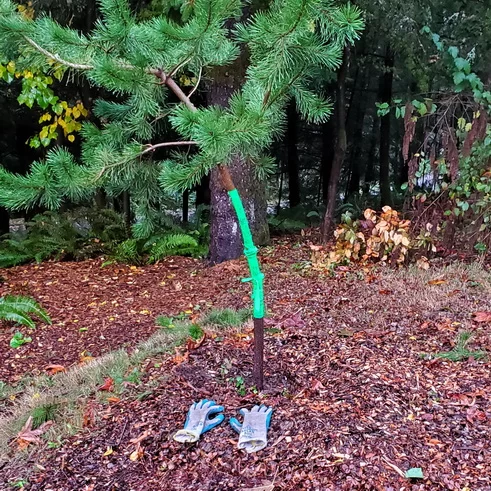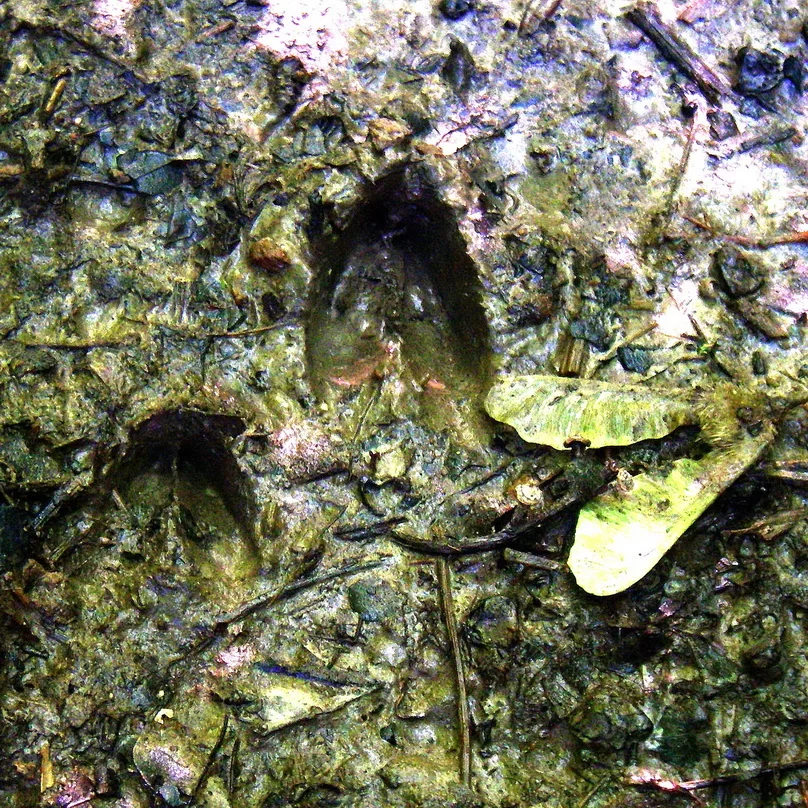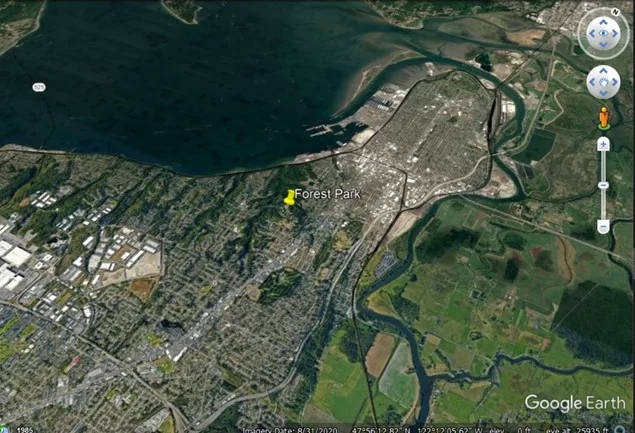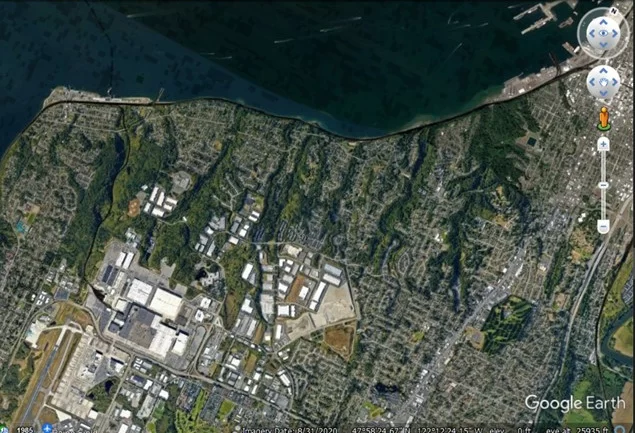Blacktails, Salmonberry, Stinging Nettle, and Cougars
One of the Shore Pines we planted in Forest Park was getting thrashed by a Blacktail buck testing his antlers and marking his territory as the rut approached. He might have been showing his interest in the doe that ate so many of the leaves off our recently planted Paper Birch saplings that I’m worried may not come back next spring. Like many urban forests across North America, the composition of the flora in Forest Park is being affected by the browsing preferences and population densities of resident deer. For example, I’ve seen that in certain remote areas of the Park where deer gather in winter much of the understory is barren except for one plant they seem to avoid — Stinging Nettle!

The Impacts of Deer on Stands of Salmonberry
Since deer browse on shrubs, I wondered how they might impact the Park’s stands of Salmonberry. According to one of my favorite plant information resources, the USDA’s Fire Effects Information System, “Salmonberry maintains stable populations through clonal spread and annual sprouting of new, relatively long-lived ramets.” Since the deer seem to eat almost all of the new sprouts as soon as they emerge in spring, I worry that our stands of Salmonberry may not be able to persist. I was partly relieved to read that in one study, “salmonberry stem density was maintained for at least 8 years, despite high annual mortality of small, new stems (85%-95%).” Thus, I guess the deer are not going to wipe out the Salmonberry in the short term, but what will happen if the deer population continues to grow?

Predators in Urban Natural Areas
Coyotes sometimes prey on deer, and bobcats can take newly born fawns, but what happens if that is not enough to keep the deer population in check? I can’t imagine any kind of controlled hunting occurring inside the City limits but, in theory, could cougars survive in Forest Park? You’ve probably seen the reports of cougar encounters in Los Angeles and King County, and I was amazed to read that in some areas of Southeast Asia, certain species of large mammals have established populations in natural areas adjacent to human settlement. “Four species — tigers, Asian elephants, wild boars and clouded leopards — showed increased populations in areas with human infrastructure.”

Cougars in Forest Park?
Forest Park by itself, would probably not be large enough to support resident populations of cougars, but along the shoreline between Everett and Mukilteo there are six other wooded ravines that they could access via the railroad line running along Port Gardner Bay. The combined acreage might conceivably support a cougar population.

But how would they get there? They almost certainly would not cross Interstate 5 from the east. They would have to be captured in the Cascades and relocated to Forest Park. I can’t imagine that getting much popular or political support, so we’ll just have to hope that coyotes and bobcats alone can keep our resident deer from undoing our forest restoration efforts.